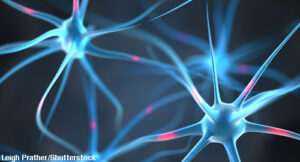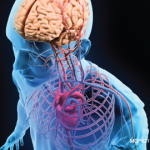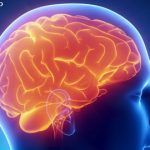 ORLANDO, FLORIDA—Recognizing and effectively treating neuropsychiatric lupus is one of the more challenging tasks facing rheumatologists. At ACR Education Exchange 2023, the session titled Challenging Cases in Neuropsychiatric Lupus provided an insightful overview of the topic and stressed the importance of differentiating this condition from mimics, including infections, medication effects and malignancy.
ORLANDO, FLORIDA—Recognizing and effectively treating neuropsychiatric lupus is one of the more challenging tasks facing rheumatologists. At ACR Education Exchange 2023, the session titled Challenging Cases in Neuropsychiatric Lupus provided an insightful overview of the topic and stressed the importance of differentiating this condition from mimics, including infections, medication effects and malignancy.
CNS Lupus
Michelle Petri, MD, MPH, MACR, professor of medicine and director of the Johns Hopkins Lupus Center, Johns Hopkins School of Medicine, Baltimore, began her presentation by answering a specific question: What is central nervous system (CNS) lupus?
Two basic types of CNS lupus exist: focal disease, which typically stems from ischemic or vascular mechanisms; and diffuse disease, which can be caused by autoantibodies against brain-specific antigens, blood-brain barrier disruption or intrathecal inflammatory cytokines, such as interferon alpha or tumor necrosis factor-α. The main targets that appear to be implicated in CNS lupus are the microglia, which make up about 10% of the total cells in the CNS. Dr. Petri explained that lupus serum immunoglobulin induces microglia activation through an Fc fragment-dependent pathway modulated by the B lymphocyte stimulator (BLyS, also known as BAFF).
Several animal models provide insight into the mechanisms at play in murine models of CNS lupus. In a study from Nestor et al. looking at a mouse model, lupus antibodies were shown to induce behavioral changes mediated by microglia.1 This effect seems to be blocked by angiotensin-converting enzyme (ACE) inhibitors, which can prevent microglia activation in these models; however, it is important to note that ACE inhibitors and angiotensin receptor blockers (ARBs) have not been tested in humans with CNS lupus.
In a study by Chalmers et al., MRL/lpr mice (a classic murine lupus model) depleted of macrophages and microglia via treatment with a small colony stimulating factor-1 receptor were observed to show specific improvement in depression-like behavioral deficits.2
Finally, Karino et al. performed RNA sequencing of MRL/lpr mice and identified Ikbke, which encodes the inhibitor of NF-κB kinase subunit ɛ (IKBKε), as a potential therapeutic target for neuropsychiatric lupus. The researchers then observed that intracerebroventricular administration of an IKBKε inhibitor ameliorated cognitive function and suppressed microglial activation in these mice.3 Although intracerebroventricular administration of a medication does not seem feasible in humans, this study at least provides a potential proof of concept for identifying and treating a specific target in CNS lupus.
One of the most important lupus-related research articles in recent years is a 2019 article from Pisetsky et al. that defined type 2 symptoms of systemic lupus erythematosus (SLE), Dr. Petri stated. Type 1 symptoms of lupus include classic signs and symptoms of the disease, such as rash, arthritis, alopecia and other manifestations that have a clearcut relationship to autoimmunity. Type 2 symptoms, such as fatigue, diffuse pain, cognitive dysfunction, sleep disturbance, anxiety/depression and brain fog are non-inflammatory and do not respond to immunosuppression.4
Dr. Petri explained that understanding both type 1 and type 2 lupus symptoms is important because both are common and patients may be frustrated by a clinician’s assessment that they are doing well based on type 1 symptoms when they feel miserable due to ongoing type 2 symptoms.
A great deal of additional research is needed to understand the pathogenesis of these various manifestations of lupus, but thus far some evidence suggests aerobic exercise, tai chi and such medications as amitriptyline and duloxetine can be helpful for certain type 2 symptoms.
Type 1 symptoms of lupus include the classic signs & symptoms of the disease; type 2 symptoms, such as fatigue, diffuse pain, cognitive dysfunction, sleep disturbance, anxiety/depression & brain fog, are non-inflammatory & do not respond to immunosuppression. … Patients may be frustrated by a clinician’s assessment that they are doing well based on type 1 symptoms when they feel miserable due to ongoing type 2 symptoms.
Specific Forms
In the next portion of the talk, Dr. Petri transitioned to a discussion of specific forms of CNS lupus and how these presentations should be evaluated and treated. If seizures are seen in a patient with lupus, it’s important to rule out other causes before concluding the patient has CNS lupus. In such cases, it may be necessary to hold hydroxychloroquine because anti-malarials are known to lower the seizure threshold.
When psychosis is present in a patient with lupus, using intravenous pulse glucocorticoid therapy instead of oral glucocorticoids may be important because the former can significantly improve lupus-related psychosis and the latter may worsen the condition.
With respect to myelitis in patients with SLE, Dr. Petri made a point of noting this should not be labeled transverse myelitis because the process is often longitudinal in patients with lupus, meaning contiguous involvement at multiple levels of the spinal cord can be seen. This can be devastating for patients and often presents with urinary retention. In such cases, it is imperative that a cord magnetic resonance imaging (MRI) study be promptly performed, as well as a lumbar puncture. A pleocytosis will typically be present in the cerebrospinal fluid.
For patients with encephalopathy, individuals are not just confused but completely disoriented. When the encephalopathy is due to underlying lupus activity, intravenous pulse glucocorticoid therapy is used, in addition to cyclophosphamide or rituximab depending on the response to treatment. Plasmapheresis has sometimes been used in these cases, Dr. Petri stated, but she less commonly employs this therapy. It’s important to note that encephalopathy due to lupus can occur late in the disease course, thus even older patients should be evaluated for this manifestation if they are disoriented and an alternative cause is not found.
Stroke is rare in lupus and, when it is seen, entities that should be considered include antiphospholipid syndrome (APS), embolic phenomena from valvular vegetations and effects of traditional cardiovascular risk factors for ischemic stroke, which are accelerated in patients with lupus.
Posterior reversible encephalopathy syndrome (PRES) can be seen in patients who have been newly diagnosed with lupus and are on high-dose glucocorticoid therapy; in such cases, glucocorticoids should be rapidly tapered.
Finally, Dr. Petri discussed catastrophic APS (CAPS), in which 60% of patients have encephalopathy from microangiopathy. Traditional triple therapy for this condition includes intravenous heparin, high-dose glucocorticoids and plasma exchange with or without intravenous immunoglobin (IVIG), but Dr. Petri explained that rituximab should be quickly added if the patient is not improving or if the platelet count is not increasing. A major advance in our understanding of CAPS has come from looking at the condition known as a complementopathy, similar to what is seen with atypical hemolytic uremic syndrome (aHUS). This understanding of CAPS as a complement-mediated disorder may have implications for future therapies.
In Sum
Dr. Petri’s parting words included the admonition that when considering neuropsychiatric symptoms in patients with lupus, always think first of other causes, with infections highly suspect. When it is clear that CNS lupus is present, act quickly and competently; the well-being of the patient depends on it.
Jason Liebowitz, MD, completed his fellowship in rheumatology at Johns Hopkins University, Baltimore, where he also earned his medical degree. He is an assistant professor of medicine in the Division of Rheumatology at Columbia University Vagelos College of Physicians and Surgeons.
References
- Nestor J, Arinuma Y, Huerta TS, et al. Lupus antibodies induce behavioral changes mediated by microglia and blocked by ACE inhibitors. J Exp Med. 2018 Oct;215(10):2554–2566.
- Chalmers SA, Wen J, Shum J, et al. CSF-1R inhibition attenuates renal and neuropsychiatric disease in murine lupus. Clin Immunol. 2017 Dec;185:100–108.
- Karino K, Kono M, Takeyama S, et al. Inhibitor of NF-κB kinase subunit ε contributes to neuropsychiatric manifestations in lupus-prone mice through microglial activation. Arthritis Rheumatol. 2023 Mar;75(3):411–423.
- Pisetsky DS, Clowse MEB, Criscione-Schreiber LG, et al. A novel system to categorize the symptoms of systemic lupus erythematosus. Arthritis Care Res (Hoboken). 2019 Jun;71(6):735–741.


